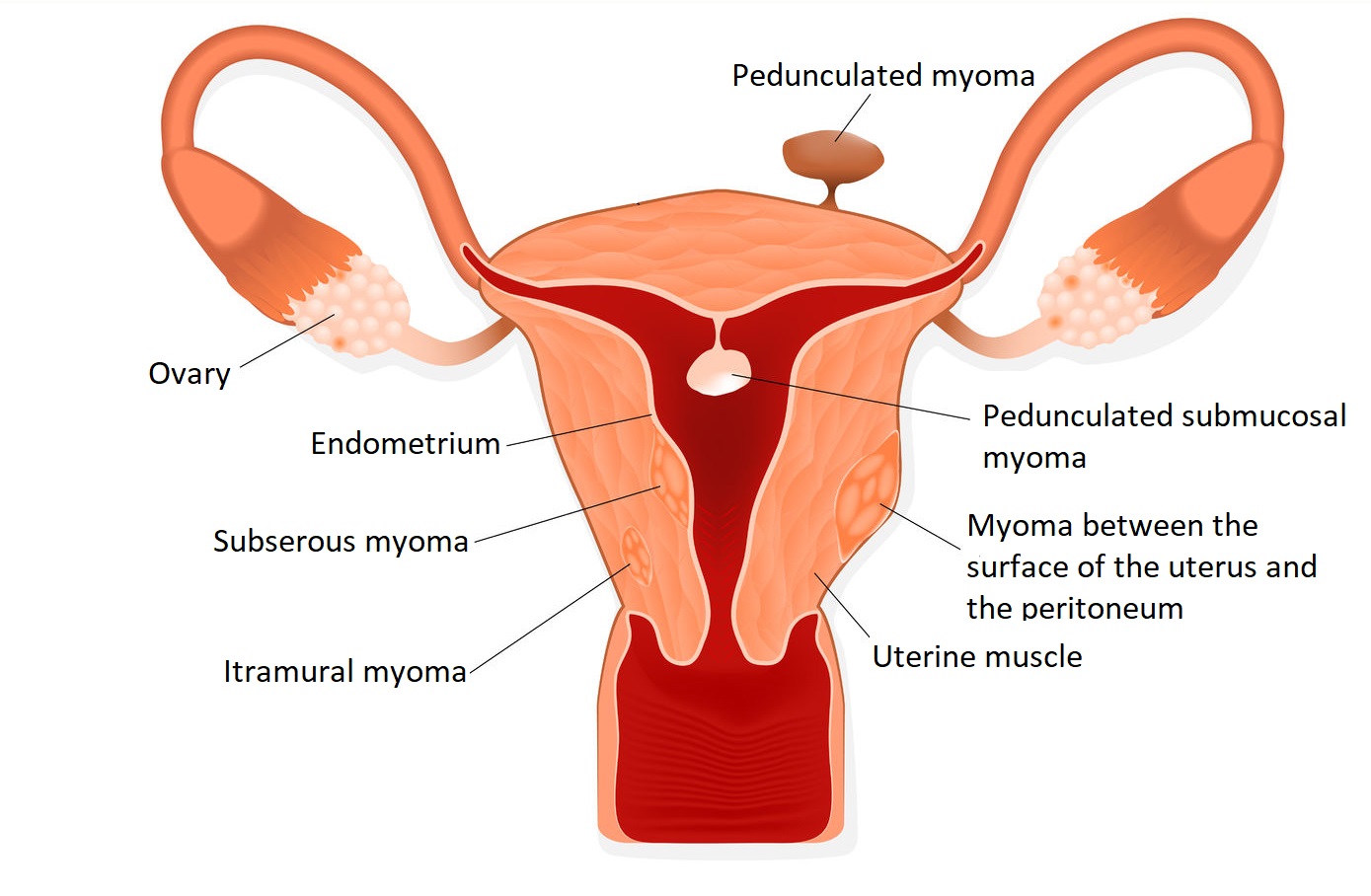Hysteroscopic myoma removal
Hysteroscopic myoma removal is a minimally invasive, short procedure that does not involve opening the abdominal cavity. The procedure is effective in case of myomas growing towards the uterine cavity.
What is a myoma?
A myoma is a benign cell proliferation consisting of connective tissues, on the smooth muscle tissue of the uterus. In terms of size, it can range from rice grains to a melon. Small myomas not causing any complaints do not need treatment. The benign tumour mainly occurs at childbearing age, 25-30. After menopause around the age of 50, as the oestrogen levels fall, the myomas may shrink or even disappear. As for the location of cell proliferation, we distinguish between myomas that expand toward the uterine cavity, myomas that extend into the uterine muscle, and myomas that extend toward the outer surface of the uterus.
What are the causes of myomas?
The risk of developing myomas is greatly increased by a malfunction of the thyroid gland, ovaries, or hormone-producing glands. Disruption of the hormonal balance is thus a particularly strong predisposing factor. Nearly 20 percent of fertile women have myomas. Oestrogen dominance (upset in the balance between progesterone and oestrogen) can also cause myomas. The phenomenon can be traced back to hereditary predisposition, vitamin and mineral deficiencies, stress or other mental causes.
Based on their location, myomas can be divided into 3 groups, which cause different complaints due to their location, and can also be treated with different procedures because of to their location. These are summarized in the table below:
| Intramural myoma | Subserous myoma | Submucosal myoma | |
| Location | in the uterine wall | on the uterine surface | in the uterine cavity |
| Complaints | bleeding disorder, prolonged, spasmodic bleeding, chance of pregnancy may be reduced | may affect the surrounding organs (rectum, bladder, pelvis), resulting in urination and defecation complaints, as well as lower back pain | may distort the uterine cavity, chance of pregnancy may be reduced, the myoma can decrease the chance of infertility and miscarriage |
| Treatment method | Laparoscopic myoma removal | Laparoscopic myoma removal | Hysteroscopic myoma removal |
When is myoma removal surgery necessary?
A myoma is a benign tumour of the uterus that can range in size from a few millimetres, which most often cause no symptoms, to extreme cases when the size of the myoma is like of melons, weighing several kilograms. Myoma growing towards the uterine cavity usually causes a bleeding disorder (prolonged or cycle-independent, intermediate bleeding). It also often causes infertility, in an irregularly shaped uterine cavity due to the tumour, where the fertilized egg may suffer from a disorder of implantation. In addition to abnormal menstruation and abdominal pain, myomas can also cause anaemia.
In cases where the benign tumour is already causing more serious problems or is at risk of abnormal lesions, hysteroscopic myoma removal surgery is recommended.

How is the surgery performed?
Hysteroscopic myoma removal is a minimally invasive endoscopic procedure that can be performed as part of a one-day surgery as it does not involve abdominal incision. It can be done under general anaesthesia.
With the surgery, the uterine muscles and all the surrounding tissues are preserved, promoting faster healing, only the myoma nodules in the uterine cavity are removed. For myomas in the uterine wall or on the surface of the uterus, laparoscopic myoma removal surgery is performed.
During the procedure, the doctor, after thorough disinfection, inserts an extremely thin device, only a few millimetres long, into the uterus through the endocervix. The whole procedure takes about 30 minutes. Our patients may leave our hospital after a brief observation.
What are the dangers of hysteroscopic myoma removal?
As with any surgical procedure, hysteroscopic myoma removal has dangers. The following risk factors may occur:
- Sensitivity to anaesthetics may occur
- Bleeding, injury to the uterine wall
- Inflammation of pelvic organs
In general, failure to intervene can have more serious consequences than the resulting easy-to-treat complications.
If you have any complaints, we will be happy to see you at our gynaecological clinic, where after a full examination, your doctor will recommend the most appropriate treatment for you.
What can you expect after hysteroscopic myoma removal surgery?
The recommended hospital stay after hysteroscopic myoma removal surgery is 2-3 days on average, the length of which is determined by your doctor, taking your recovery into consideration. Suture collection is done 1 week after the procedure. The average length of postoperative recovery and recovery is 2-4 weeks, during which time a health conscious lifestyle is recommended.

